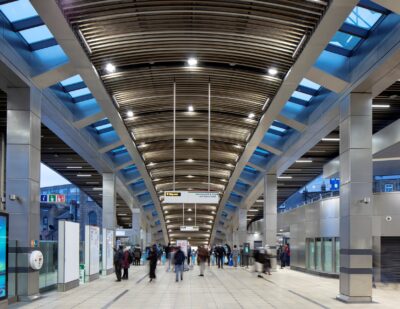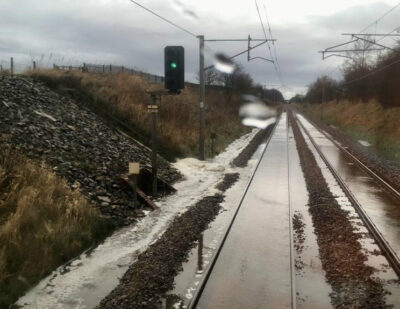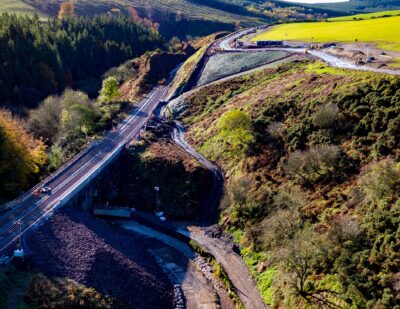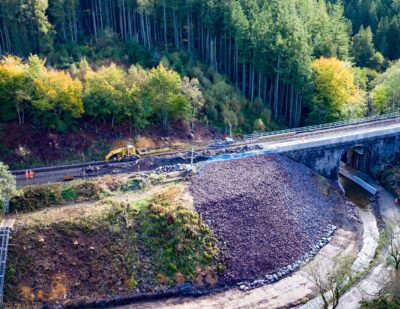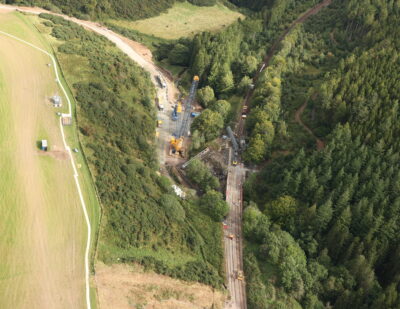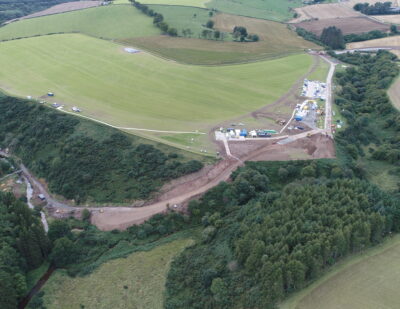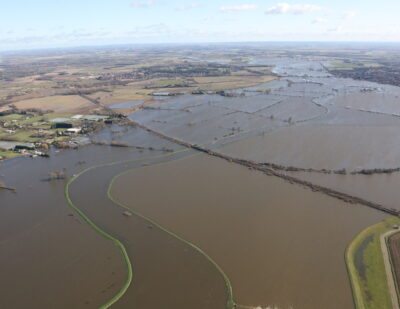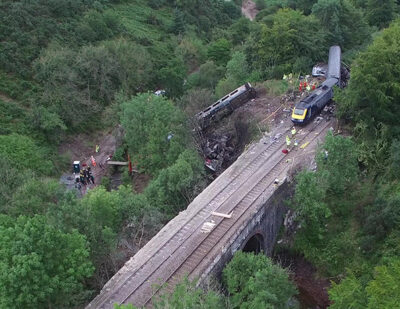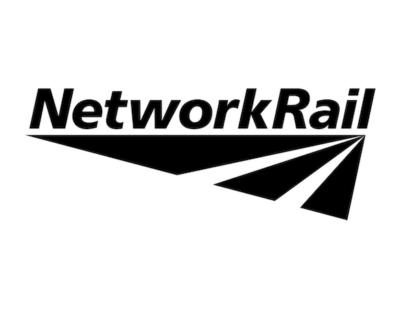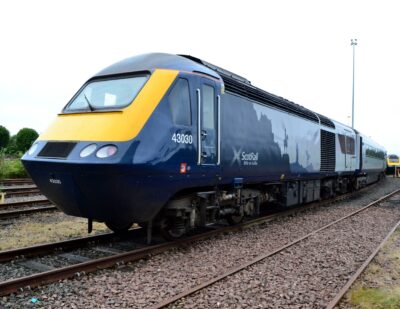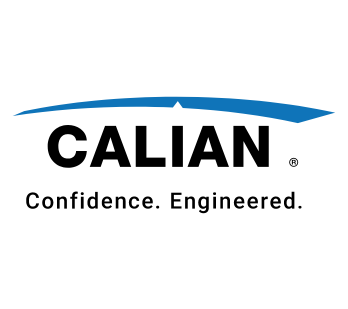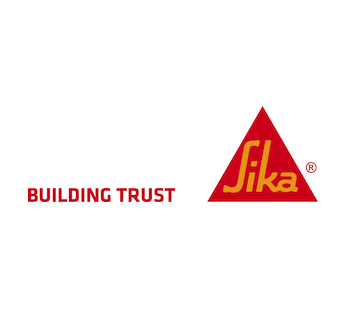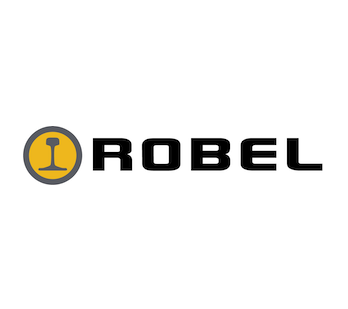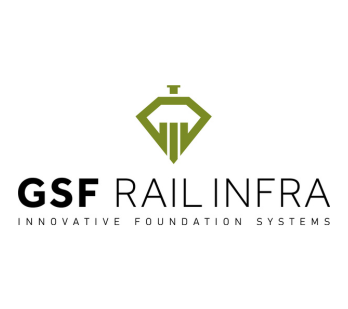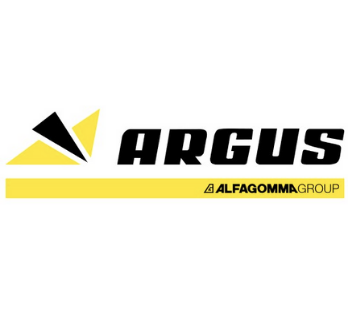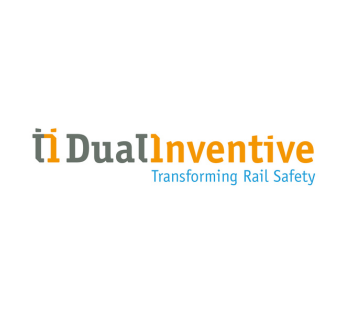The Rail Accident Investigation Branch (RAIB) has released its report into the Stonehaven Derailment, in which three people lost their lives.
This follows an in-depth investigation into the accident.
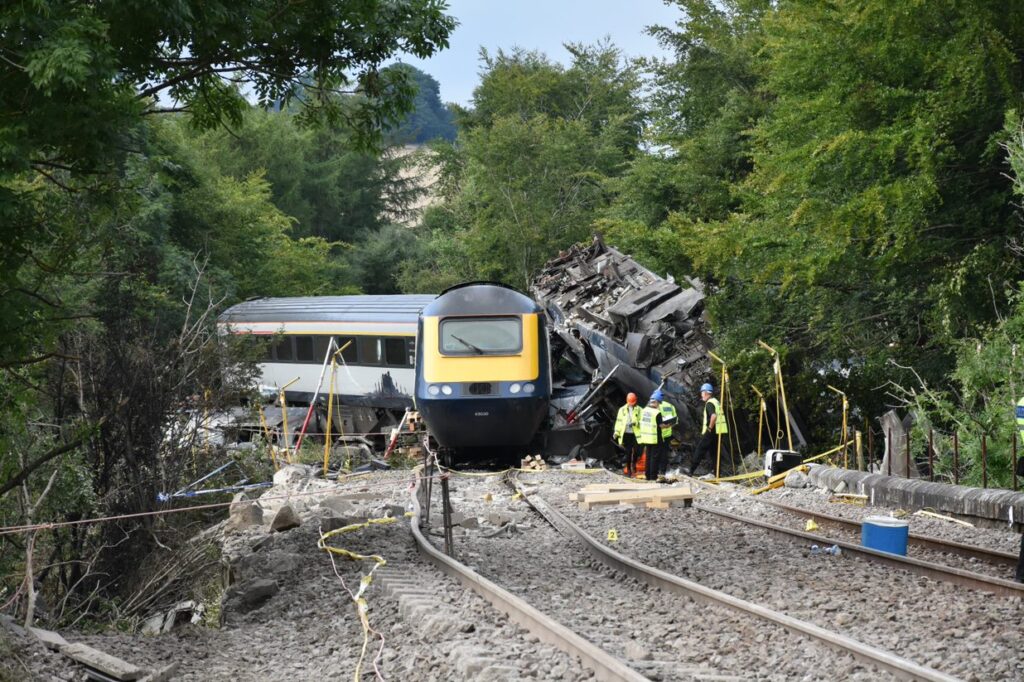
The six-car passenger train derailed at 9:38am on 12 August 2020 after hitting a landslip roughly 2.25km north-east of Carmont, Aberdeenshire.
It was carrying nine people, of whom three were staff. The driver, Brett McCullough, conductor Donald Dinnie and passenger Christopher Stuchbury all died in the accident. The remaining individuals were taken to hospital.
The report noted that on the day of the accident there had been consistent heavy rain at the site of the derailment. Between 6–9am approximately 51.5 millimetres fell – close to the average rainfall this area receives during the entire month of August.
Cause of the Stonehaven Derailment
The report states the accident was caused by the train striking debris that had washed out of a drainage trench due to heavy rain.
This trench, which had been constructed roughly a decade earlier, contained a perforated pipe that had been installed as part of a project to address a known problem with drainage and the stability of a cutting in that area.
However, the drainage system and associated earthworks had not been constructed as per the original design and was therefore unable to cope with the heavy water flow that morning.
RAIB’s investigators found that a low earth bank had been constructed that ran across a slope leading towards the track. This significantly altered the flow of water so that in times of extreme rainfall a concentration of water would travel into the steeply sloping section of trench.
On the morning of 12 August 2020, the rain was heavy enough to wash away the gravel fill and the ground immediately surrounding the trench.
The report also found that that the route controllers responsible for the operational management of Scotland’s railway network hadn’t been given the information, procedures or training needed to effectively manage complex situations like they encountered that day.
In addition, the report states that Network Rail’s management processes hadn’t identified or addressed weaknesses in the way it mitigated the consequences of extreme rainfall events and despite an awareness of the risk, the organisation hadn’t completed the implementation of additional control measures.
The report also highlighted that the train – a refurbished HRT – had been designed and constructed before a number of modern safety standards had been introduced.
It noted that while it’s not certain that different rolling stock would have led to a different outcome, the RAIB thinks it likely that the resulting situation would have been more positive had the train been compliant with the latest crashworthiness standards.
Recommendations
The RAIB report makes 20 recommendations to improve railway safety following the investigation of this derailment. These include:
- Better management of civil engineering construction activities by Network Rail and its contractors
- Additional standards and guidance on the safe design of drainage systems
- Improved operational response to extreme rainfall events
- Enhancing the capability of route control offices to effectively manage complex events
- Extending Network Rail’s assurance regime to encompass route control offices
- Measures to prevent derailed trains from deviating too far from the track, such as equipment fitted to track and/or trains
- Addressing train design issues identified by the investigation and better understanding the additional risk associated with the operation of older trains
“It’s important for all of us in the rail industry not to dismiss this truly harrowing accident as a one-off event. The railway industry needs to think through the implications of severe weather on its infrastructure, whilst also looking to the behaviour of trains should they derail after striking obstructions such as washouts and landslips.
“Is there more that could be done to keep trains in line and closer to the track, to minimise the risk of jack-knifing and to keep bogies attached to rail vehicles?
“RAIB doesn’t have all of the answers but is urging the railway industry to think about ways of guiding derailed trains, and to think about the longer-term implications of continuing to operate rolling stock that pre-dates modern standards.”
The full report is available to view and download on Gov.uk.

